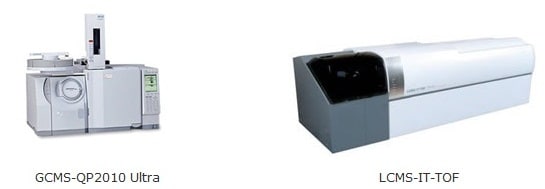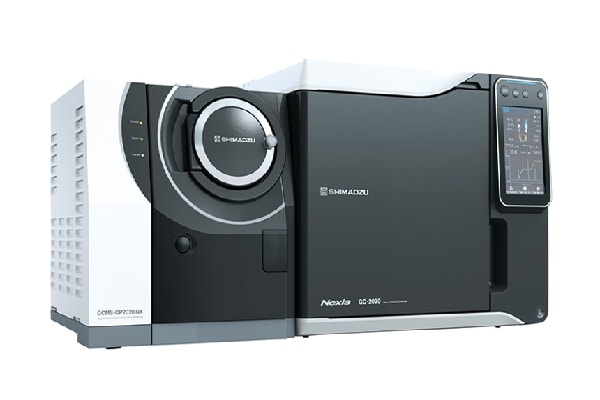
GCMS-QP2020 NX

INDUSTRY
Sports doping, Life Science, Small Molecule Pharmaceutical
KEYWORD
INTRODUCTION SERVICE&PRODUCTS
GCMS-QP2020 NX
With expansion of sport businesses, the social influence of drug doping is increasing. Various new doping drugs and methods are emerged one after another by spread of information technology so that the development of a new doping test method is indispensable to promote legitimate sports. Today we visit Anti-Doping Research Laboratory, Japan Chemical Analysis Center to ask about the current situation of doping test and the new concept of doping test by multi-class mass spectrometry analyses.
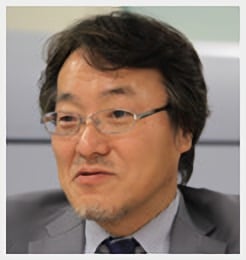
*Affiliates and titles of the interviewee are current as of the time of reporting.
Related Link: World Anti-Doping Agency
URL
https://www.wada-ama.org/
You have been focusing on the development of new doping test method. Could you tell us about the conventional one at first?
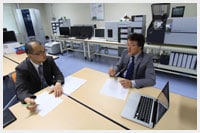
So far, the Targeted analysis, which identifies the target compound automatically under the condition according to that target, was mainstream. In a big international competition like Olympic Games, this method is very useful to conduct a highly-sensitive high-throughput multi component analysis for many doping substances. However, since new substances are added to the World Anti-doping Agency’s List of Prohibited Substances and Methods every year, we have to classify them according to the properties, conduct the analysis for each substance class and perform the tests by human wave tactics using 50 units of instruments. This type of analysis accounts for 60 to 70% in the analysis of traditional drugs, e.g., stimulant drugs and narcotic Analgesics.
What kind of equipment do you use for the above mentioned analysis?
It is GC-MS. Although we use several types of different vender’s GC-MS in our laboratory, we frequently use Shimadzu’s GCMS-QP2010 Ultra. The function requiring efficient Targeted analysis is to automatically change instrument condition and target ion according to target substance in a series of analysis and to identify it from the retentions index. For this purpose, robustness of instrument and discussion with engineers to elicit instrument’s potential become important. Moreover, we trust in Shimadzu’s products in terms of high-throughput performance, stability and after-sales support. However, we have been focusing on the technical innovation to break through the limitations of such Targeted analysis.
Can you tell us about the limitation more concretely?
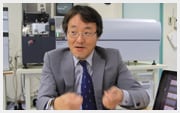
The limitation of Targeted analysis results from that we have to set the target substance and optimize measuring condition in advance. For example, non-approved substances called unregulated drugs and designer drugs, which have been become a social problem, is a compound slightly modified the structure of existing drugs. While they often remain some sort of pharmacological activity, they distributed in the underground market without regular safety assessment. In addition, since their mass and chemical properties are somewhat different from the existing one, they are eliminated as the untargeted substances by high specific test for targeted drugs. So this is the reason we can miss them. People, who help such illegal act, simply make copy or similar products and sell it on a virtual pharmacy on the Internet. However, once non-approved, unknown drug is found, laboratory experts have to take a series of steps to establish the one test method: firstly confirm its safeness, secondly search metabolite marker for a test by conducting application study or human study and thirdly evaluate the accuracy of the new test. These steps are similar as that of drug discovery and it takes a long time. Thus another drug will be available by the time the new test method is established. As it is often expressed, we play a cat and mouse game.
Are there any countermeasures?
That is to develop an analytical method to meet a wide-range of substance without limiting the target in advance.
Can you be more concretely?
Target analysis can be expressed like "trace amount of the targeted component is detected among the garbage with high sensitivity." That means we prepare samples to decrease the other untargeted compounds (garbage) and try to detect only the targeted molecule with using specific measurement conditions for it. In other words, the unregulated and designer drug is excluded as the garbage. So we detect many kind of compounds as much as possible simultaneously under the condition that the almost of compounds are not lost during measurements and store full range of the ion traces electronically as the database. The peaks of known compounds are identified in real time here, but also the unknown ones are accumulated without exclusion. In the case that unknown compounds, not to be found in a healthy subjects of a person who doesn’t take a drug, are appeared in the certain peak profile, it is highly suspicious to be the unapproved drug taken from outside the body and its metabolite. Then we conduct structure analysis for the compound of peak by mass spectrometer to find out a potential doping drug.
What kind of mass spectrometer do you need for such analysis?
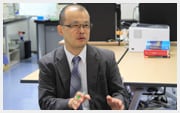
A wide range of compounds need to be covered by this type of analysis. So we use LC-MS which can detect product ions generated multi-stage ion dissociation analysis with high mass accuracy. Shimadzu’s LMCS-IT-TOF is the one to satisfy such condition among the instruments we have. In the Targeted analysis using GC-MS, target compounds are extracted, purified and fractionated by acidic, neutral and alkaline solution and derivatized according to their chemical properties. In other words, it can be said the considerable targeted molecule is determined at this stage. On the other hand, using LC, the sample can be loaded without such complicated preparation and relative low resolution to capillary GC can be covered by multi-stage ion dissociation analysis with high mass accuracy. This type of concept, so-called Non-targeted analysis was discussed around 10 year ago. At that time we, including mass vendors, hardly had any idea to use TOFMS for drug screening because it was mainly used for biopolymer analysis. Lately, LC-TOFMS is recognized as an effective tool for multi component simultaneous analysis of small molecules containing multiple unknown compounds. Currently everyone can use TOFMS instrument for this purpose.
IT-TOFMS is a specific technology in our company. As our engineers had a great difficulty to let the trapped ion transfer into the flight tube with keeping high resolution and high accuracy at the same time. We are very pleased to hear that technology is very useful for your research. Are there other issues you are tackling?
It is biopolymer, especially glycoprotein hormones. Erythropoietin (EPO), a hormone stimulating classification of hematopoietic stem cell into red cell, is particularly well known. Its recombinant protein drug is used as medicine of nephrogenic anemia. Its sometimes is used as the doping drug to enhance one’s endurance performance by increasing the hemoglobin, but it is difficult to distinguish between nature protein which is secreted in human body and recombinant protein drug.
How do you distinguish?
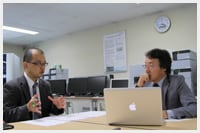
In general, Immunoassay or western blotting method is used. Prepare an antibody bonded to a specific glycoprotein hormone, and bond a labeling reagent to generate fluorescence or chemiluminescence at the time of binding antibody to target hormone, so that we can measure the abundance of glycoprotein hormone quantitatively. Since we determine which glycoprotein hormone to be observed in advance, this is one kind of targeted analysis too. One immunological method is required for one target. We use a urine sample for EPO screening and it takes for 48 to 72 hours. So we carry out the blood screening test for the all or registered athletes before the competition and grasp the number of hemoglobin, red-cell and the ratio of blast formed red-cell. Based on this result, the athletes those who show adverse analytical finding are further tested in western blotting. However, we have seen some unidentified cases; the result of blood test seems to be apparently suspicious, in spite that the electrophoresis profile of EPO contained in urine differs from that of the reference standard.
Why did that happen?
EPO is one of the most significant recombinant protein drugs in medical circles and pharmaceutics. After the patent of the first generation, which put into practical use for the first time in the world, was expired in the middle of the year 2000, many similar products, so-called bio similar drugs having different structures were available around the world. In the unidentified case, it was understood that the recombinant EPO was recognized as the nature EPO analogue, which has different characteristics on electrophoresis on immunity. The recombinant protein drug is made in cultivation of the trans-genic CHO cell, to which target protein coded gene transfer. This method can synthesize glycoprotein, whose core protein amino acids sequence is exactly same as that of target protein, however, the carbohydrate structure cannot be controlled, because that isn’t directly regulated by gene. The carbohydrate structure of recombinant glycoprotein depends on a usable glycosyltransferase and existing ratio of monosaccharide in culture condition. So we can estimate easily that the difference between the first generation EPO and its biosimilar is in their carbohydrate. Actually our research for over last few years verifies as follows; 1) the first generation and its biosimilar have the same core protein amino acid sequence and the glycan binding site, 2) there is a big difference among the antenna structure, the terminus structure and the ratio of monosaccharide in whole glycan, and 3) the difference between first generation EPO and its biosimilar in carbohydrate as mentioned above is consistent with the difference of those in electric property estimated by the results of isoelectric focusing electrophoresis.
Do you use mass spectrometer for that research?
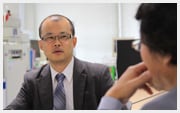
Yes. We use Shimadzu LCMS-IT-TOF as explained previously and AXIMA Resonance, which adopts MALDI as ion source and detect ion by IT-TOFMS. Many pharmaceutical companies have researched for their EPO products and reported on them. Our purpose is to analyze glycoprotein drug and its biosimilar prohibited by World anti doping Agency (WADA), among the recombinant glycoprotein that have been distributed in the market. So we require researching the characteristic of each target glycoprotein. To do that, not identifying and distinguishing geometric isomer virtually, we would like to confirm carbohydrate structure from multi stage MSn CID spectra directly. Our approach is quite orthodox. We don’t use special method. Glycoprotein is digested by trypsin at the first stage, secondly N-linked glycan is cleaved by PNGaseF from core protein, and thus, we get digests that consist of three groups such as glycopeptide binding short O-linked glycan, triptic peptide and N-linked glycan. Finally we conduct MS analysis for these samples. LCMS-IT-TOF and AXIMA Resonance can analyze the core protein structure, glycan binding site and monosaccharide ratio of the whole binding carbohydrate, after N-linked glycan is extracted as hydrazone. It has been reported widely that the bioactivity of glycoprotein hormones depends on the antenna structure, terminus structure and sialic acid content, which needs to be analyzed through the various restriction enzymes and the complicated extraction process in general. However, we could verify that the binding site of o-linked glycan even in trypsin digests which contains several serine residues as binding site candidates can be identified by multi-stage MSn(n>3) CID measurement.
Yes, the amount of data is overwhelming. From the vast number of results, I can realize this
is a product of hard work by you and your staffs. Well, based on your explanation so far, if the detection system is IT-TOFMS, either ESI or MALDI can do that kind of analysis. Is that correct?
No. Our laboratory uses about ten MS instruments. However there is no instrument that is the same. Each instrument has a different ion optics, ion source and front end. We use them depending on the purpose and verify a method with several instruments. Unlike a fundamental research, the test method development is a technology transfer approach, that is, its intention is to share that method with other institutes in the world. However it is not always true that our counterparts have the same ESI or MALDI as we do. Although it is hard for you to realize, relative signal intensities of some peptide or glycans are different in MS spectra acquired by LC- and MALDI-IT-TOFMS even if we measure the same sample. Of course the MS spectrum pattern becomes different as well. Based on this, we try to seek a reproducible condition to be able to detect in the various platforms because we can’t call a method to realize with the only one special instrument in the world as a "standard".
Exactly.
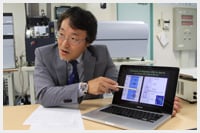
We know some cases that the trypsin digested peptide, whose signal intensity is relatively high in an original glycoprotein measurement in LC-MS, is not detected in MALDI-MS experiment and vise versa. This happens a lot when that peptide includes several basic amino acids or when the detection sensitivity of trypsin digests is dependent on the characteristics of ionization. So, to analyze a peak with high signal intensity doesn’t mean we can always get a stable and sensitive result. Providing this sort of negative information is important to improve the doping test method and to achieve its standardization.
I see. Considering when other institutes in overseas will use the method, in terms of validation, you need two ionization mass spectrometers. I understand very well. In the case that the analysis is conducted by the various institutes, does the operator’s skill level affect the test?
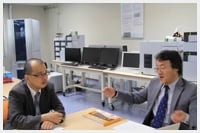
That is the point we are expecting for mass spectrometry, in which we think it is less likely to happen. It is also great for us to recognize the accuracy of result visually. When the test doesn’t go well, we can find out the false part by looking at the spectrum. Another merit is that we can conduct multicomponent analysis at one time promptly. There is possibility in not only LC-MS but also GC-MS in this kind of analysis. For example, in the case of metabolomics analysis that is getting popular recently, same as the aforementioned ESI and MALDI, their ionization methods are different so that it is useful for the analysis of hydrocarbon and steroid, which are hard to be detected by LC-MS. In the former times, we wrote macro program for data processing and reporting by ourselves to automate multi component simultaneous analysis. Thanks to your efforts to meet the request we made, we can customize by ourselves to some extents and now it becomes more customer-friendly, though it took for a long time. (laughing) In the future, it would be easier to use if you will support evolutionary software enabling to store and update important data of new compound of which standard sample is not available. That will help that mass spectrometry expands wider usage as general-purpose equipment.
That is exactly right. Now we are active in providing the analysis condition according to the purpose, what we call Method Package, and developing the database for identification.
Multiplex is also necessary. We cannot afford to change equipment every time the target compounds changes. In this regard, mass spectrometer allowing us to conduct many analyses only by changing conditions is very attractive.
Thank you very much for having a great expectation for mass spectrometer. Is there anything you are not satisfied?
Well, at first it is sensitivity. The amount of urine taken in the current doping test is from 70mL to 90mL at most. That is, the sensitivity of MS instrument should be improved 100-times. Secondly the price is the issue. In an international competition, a large number of samples should be handled in short time so that introduction of mass spectrometer would be a huge investment.
Finally we would like to ask you the vision for the future doping test.

As mentioned so far, many drugs are produced one after another and there are many users of such drugs. Since the Internet has removed the information barrier, the expansion of new drugs has been accelerated. We, laboratory experts have fallen behind because securing the credibility and the safety has come first. So I believe that we will aim at shorten the research in introducing actively the other usable technologies developed in various field. In the on-going glycoprotein research, as I mentioned previously, Japan’s research level is very high and there are many only one technologies in this field. Unfortunately, most of western doping control laboratories haven’t been introduced them. However we believe they will be a breakthrough for the glycoprotein test in near future now approaching an impasse. Even though the things we can do would be limited, we would like the world to know the existing technologies made in Japan and contribute to the development of legitimate sport by keeping doping problem to a minimum.
Thank you very much for sparing your valuable time for this interview. It is very helpful for us.
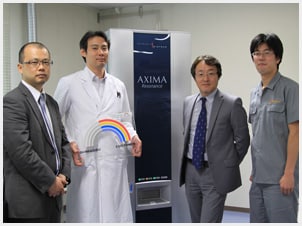
In Anti-Doping Research Laboratory Japan Chemical Analysis Center, our core products such as GCMS-QP2010 Ultra, LCMS-IT-TOF, and AXIMA Resonance support their daily research. Through this interview, I learned even the issue caused by the difference of ionization and detection system, that instrument engineers are tend to be overlooked, is reflected to their research. I was so impressed that such attitude comes from their strong belief in expansion of legitimate sports and contribution of the research outcome to the society. To maximize the advantage of having a series of various analytical instruments, we would like to continue to provide better solutions with our customers in responding their requests as I heard today.
